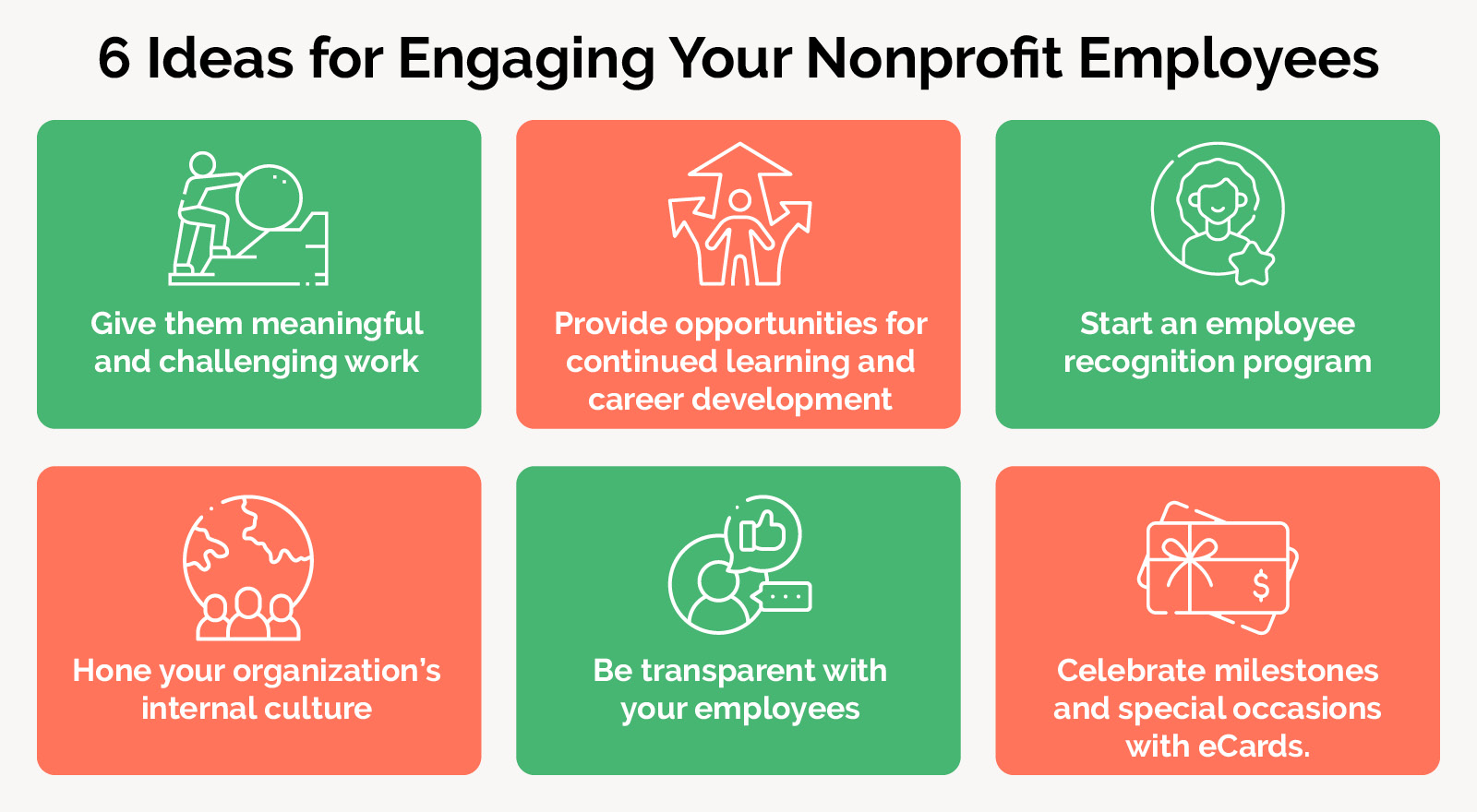Nonprofit workers often wear many hats, balancing diverse responsibilities while striving to make a difference. Despite their critical role, career development in the nonprofit sector remains a unique challenge. How can these dedicated professionals navigate opportunities for growth amidst limited resources and ever-changing demands?
Historically, nonprofit organizations have operated on tight budgets, often sacrificing staff development for programmatic needs. A recent study revealed that 87% of nonprofit employees feel their organization does not prioritize career advancement. However, by investing in professional development programs, nonprofits can enhance employee satisfaction and retention, ultimately strengthening their mission.

Career Development For Nonprofit Workers
Nonprofit workers often engage in meaningful and diverse roles, making a real impact in their communities. Career development in this sector, however, presents unique challenges. Limited budgets and resources can restrict opportunities for professional growth. This means finding new ways to develop skills and advance in their careers. Investing in career development can lead to better job satisfaction and employee retention.
Adopting personal growth strategies can be a game-changer for nonprofit workers. Pursuing certifications or attending workshops can provide valuable skills. Mentorship programs within the organization can also offer guidance and career advice. Additionally, networking with other nonprofit professionals can open doors to new opportunities. By taking initiative, nonprofit workers can enhance their career paths.
Organizations can support their employees by implementing structured career development programs. Promoting from within encourages loyalty and motivation among staff. Offering training sessions and educational resources can help employees expand their skills. Another helpful strategy is to establish clear pathways for career advancement. This way, employees understand what is needed to achieve their career goals.
Despite challenges, there are successful examples of nonprofit career development programs. For instance, some organizations offer leadership training to prepare employees for higher roles. Others provide tuition reimbursement for further education. These initiatives not only benefit individual workers but also strengthen the organization as a whole. By actively supporting career development, nonprofits can create a more skilled and dedicated workforce.
The Importance of Professional Growth in Nonprofit Sector
Professional growth in the nonprofit sector is crucial for several reasons. It helps employees feel valued and motivated. When workers see opportunities for advancement, their engagement increases. This leads to better job performance. Additionally, it attracts talented individuals to the organization.
Investing in employee development also benefits the nonprofit itself. Skilled workers can handle challenges more effectively. They bring fresh ideas and innovative solutions. Plus, continuous learning ensures the organization remains adaptable. This is vital in a sector that often faces changing demands and limited resources.
Supporting professional growth can be achieved through various methods.
- Offering training sessions
- Providing mentorship programs
- Encouraging further education
. These initiatives show employees that their growth is prioritized. Consequently, employees feel more committed to the organization.
Some nonprofits create specific roles focused on staff development. Others offer scholarships for courses and certifications. Table shows common professional growth initiatives:
| Initiative | Benefit |
|---|---|
| Training Sessions | Skill Enhancement |
| Mentorship Programs | Guidance and Support |
| Further Education | Advanced Knowledge |
. These efforts can make a significant difference, fostering a culture of continuous improvement.
Challenges in Career Advancement for Nonprofit Employees
Nonprofit employees face distinct challenges when it comes to career advancement. Limited funding is a significant hurdle. Organizations often allocate most of their budget to mission-driven programs. This leaves little for staff development and raises. Additionally, the lack of defined career paths can make progression unclear.
Another challenge is high staff turnover. Nonprofits may struggle to retain employees due to burnout and low salaries. This constant change disrupts team dynamics and hinders long-term growth. Moreover, employees may lack access to mentors who can guide their career journey. The absence of experienced advisors can stall development.
Geographic limitations can also be a barrier for nonprofit workers. Many organizations operate in rural or underserved areas. This restricts networking opportunities and access to professional workshops. Partnerships with larger organizations can help but are not always feasible. Consequently, employees might feel isolated in their career ambitions.
Despite these obstacles, there are ways to support career advancement. Offering flexible work arrangements can reduce burnout. Nonprofits can also create internal training programs. Table shows potential solutions to career advancement challenges:
| Challenge | Solution |
|---|---|
| Limited Funding | Grants for Staff Development |
| High Turnover | Employee Well-being Programs |
| Geographic Limitations | Online Training Resources |
. These efforts can make a substantial impact on the professional growth of nonprofit employees.
Strategies for Career Development in Nonprofit Organizations
Nonprofit organizations can adopt several strategies to foster career development. One effective approach is to establish mentorship programs. These programs pair less experienced employees with seasoned professionals. Mentorship provides guidance, support, and career advice. It also fosters a culture of learning and development within the organization.
Offering regular training sessions is another key strategy. Training can be conducted in-house or through external providers. Topics might include leadership skills, project management, or fundraising techniques. By investing in employees’ skill sets, organizations can enhance their effectiveness. This also shows employees that their professional growth is valued.
Creating clear career pathways helps employees understand their potential for advancement. Organizations should outline the skills and experiences needed for various roles. This clarity motivates employees to develop the necessary competencies. Additionally, regular performance reviews can help track progress. These reviews can identify areas for improvement and goals for the future.
Utilizing technology can also facilitate career development. Online courses and webinars offer flexible learning opportunities. Employees can engage in professional development at their own pace. This is especially useful for geographically dispersed teams. Table shows popular online learning platforms:
| Platform | Features |
|---|---|
| Coursera | Wide range of courses |
| Udemy | Affordable learning |
| LinkedIn Learning | Business-focused content |
. These platforms can be valuable resources for nonprofit workers.
Encouraging collaboration across departments can also drive career growth. Cross-functional teams expose employees to different aspects of the organization. This experience broadens their skill sets and perspectives. Furthermore, it prepares them for higher-level roles. Collaboration fosters a team-oriented culture.
Lastly, nonprofits should consider leveraging external partnerships. Collaborating with other organizations can provide new development opportunities. For example, joint training sessions can cover a wider range of topics. Partnering with educational institutions for certifications is another option. These partnerships can enrich the career development landscape for nonprofit employees.
Role of Leadership in Promoting Career Growth
Effective leadership is crucial in promoting career growth within nonprofit organizations. Leaders set the tone for a culture that values development. By prioritizing professional growth, they inspire employees to pursue advancement. Their support can make a significant difference in staff motivation. Engaged leaders can foster an environment where everyone thrives.
One way leaders can encourage growth is by providing clear communication. Transparent discussions about career paths are essential. Regular feedback sessions help employees understand their progress. Leaders should also offer constructive advice to guide career development. These conversations build trust and motivation.
Leaders can also champion mentorship programs. They can identify potential mentors and match them with mentees. This pairing can provide invaluable career advice and support. Mentors can share their experiences and insights, helping mentees navigate their paths. Such initiatives show that leadership is invested in personal development.
Encouraging continuous learning is another leadership responsibility. Leaders can allocate resources for training and education. They can also promote the use of online learning platforms. List:
- Offering professional development budgets
- Encouraging attendance at workshops and seminars
- Supporting certification programs
. These actions demonstrate a commitment to growth.
Recognition and rewards are powerful motivators. Leaders should acknowledge employees who actively pursue professional development. Celebrating achievements can encourage others to follow suit. This positive reinforcement creates a culture of continuous improvement. Rewarding effort shows that growth is valued and encouraged.
Case Studies: Successful Career Development Programs in Nonprofits
Nonprofit XYZ implemented a structured mentorship program to boost employee growth. Senior staff members were paired with junior employees to offer guidance and support. This initiative led to higher job satisfaction and reduced turnover rates. Mentors shared their knowledge, helping mentees to navigate their career paths. Employees reported feeling more valued and understood.
In another example, Nonprofit ABC introduced a comprehensive training program. This program included workshops, webinars, and access to online courses. Employees were able to enhance their skills in key areas such as leadership and project management. Table displays key components of ABC’s program:
| Component | Details |
|---|---|
| Workshops | In-person training events |
| Webinars | Online live sessions |
| Online Courses | Access to educational platforms |
. This initiative provided employees with continuous learning opportunities.
Nonprofit DEF focused on leadership development by creating an internal leadership academy. This program targeted high-potential employees and provided them with specialized training. Participants engaged in team projects and received coaching from top leaders. The academy aimed to prepare future leaders within the organization. Many graduates have since moved into senior roles.
Another standout example is the career advancement initiative at Nonprofit GHI. They offered tuition reimbursement for employees pursuing further education. This covered degrees, certifications, and specialized courses. List of benefits:
- Increased employee retention
- Improved skill sets
- Higher employee morale
. This program allowed employees to grow professionally without financial burden.
These case studies show the positive impact of well-planned career development programs. Nonprofits that invest in their employees create a more motivated and skilled workforce. Such initiatives not only benefit the individual but also strengthen the organization. Encouraging growth can lead to long-term success for both employees and nonprofits.

Conclusion
Investing in career development for nonprofit workers is essential for both individual and organizational growth. By providing mentorship, training, and clear career pathways, nonprofits can cultivate a skilled and motivated workforce. This investment not only enhances job satisfaction but also strengthens the organization’s mission effectiveness.
Moreover, supporting professional growth showcases a commitment to employee well-being. This can lead to reduced staff turnover and a more dedicated team. Ultimately, fostering career development within nonprofits creates a win-win situation, benefiting both the employees and the organization.